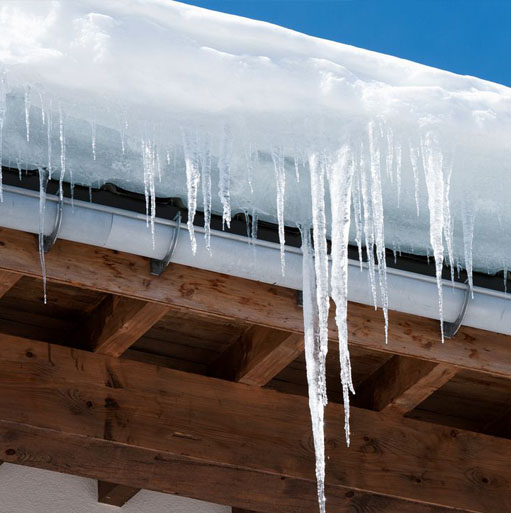Summer is moving season, but if you move into a new home in summer, you may have some surprises waiting for you your first winter in the new home. Maybe the house isn’t as well-insulated as it looks, or maybe the roof is prone to ice dam leaks. Some roofs tend to get a lot more ice dams than others.
Fortunately, you can reduce susceptibility with strategies such as improving insulation. Here are four signs that can help you tell if your home is susceptible to ice damming.
The Attic Insulation Is Scanty
Before your roof can develop a leak from an ice dam, it needs to have a layer melted snow held against the roof by the upper layers of snow, meaning the snow needs to be melted from the inside. The warmer your roof’s surface is, the faster it will melt the layer of snow that’s in contact with the shingles.
Keeping the roof’s surface below freezing may not always be possible, but the more you can cut it off from the heat inside your home, the better. And that means using plenty of attic insulation.
If your new home has a shortage of attic insulation, adding additional insulation could be the first step to reducing your chances of an ice dam.
There’s Not a Lot of Ventilation
Allowing frosty air inside your house may not sound like a good thing, but when it comes to the attic, ventilation is a must. Good attic ventilation can help draw out any heat that gets through the attic floor.
If you are lacking proper intake (soffit venting) or exhaust venting (ridge venting/pod vents), you are much more likely to have ice damming in cold/snowy weather. So if you suspect an ice dam problem, have you roofing contractor check for good attic ventilation.
The Gutters Clog Frequently
A clogged gutter can help to kick-start an ice dam leak. If the melted snow can’t drain away down the gutter, it will simply be held in place, allowing a dam to build up at record speed. This is one reason why gutter cleaning is so important in the fall.
If your gutters are simply extra-susceptible to clogs for whatever reason (for example, if evergreens around your house drop leaves into the gutters throughout the year), you may need a gutter guard. A well-chosen, well-installed gutter guard system can help reduce clogs and can allow you to clean your gutters less frequently without incurring more ice dams.
You See a Lot of Icicles
Icicles aren’t a reason for increased ice dams; they’re more of a symptom. Typically they indicate that water is thawing on your roof and then dripping down to the roof’s edge and freezing again. This is basically the same way ice dams form, so if you see a lot of large icicles along your eaves, you need to take a closer look at why it’s happening.
Fortunately, small icicles are normal and aren’t an indication of a problem. If they’re the size of a soda can in thickness (at the base), you should be worried and consider calling a roofing contractor. But if your icicles are only as large as those hanging from the other houses on your block, you don’t need to be concerned unless you spot another sign of trouble such as:
- Dirty ice (off-white or darker, rather than clear, bright white)
- Icicles hanging underneath your soffit rather than just from the edge
- Icicles or ice hanging from your siding or windows
- Water damage inside your home
These trouble signs may indicate that water has infiltrated your roof covering, meaning you need immediate repairs before further water damage to your home and belongings can occur.
If you notice one or more of these four signs, your roof could be at high risk for winter ice dams. Get in touch with a contractor such as Seagate Roofing and Foundation Services for help with fortifying your home against ice dam threats and, if necessary, repairing any damage caused by current or past ice dams.

